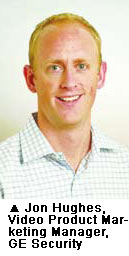Ten years ago, IP began tearing down the walls of traditional security set by analog devices. Today, the height of that breakthrough is finally being realized, in the form of multisite surveillance.
Ten years ago, IP began tearing down the walls of traditional security set by analog devices. Today, the height of that breakthrough is finally being realized, in the form of multisite surveillance.
The market for multisite surveillance, including MNCs and government facilities, is implementing multisite surveillance. Converged surveillance solutions over geographical distances are possible, with IP infrastructure, network camera development and improved storage.
To keep up with MNCs expanding their global footprint and government organizations reaching overseas, multisite video surveillance supports users with centralized security and management operations, plus the added ability to integrate various applications on an enterprise level, across different functional workgroups, said John Centofanti, National Sales Manager of Security Systems, Americas, Panasonic System Solutions Company.
International security providers agreed their customer base shows a push toward integrated multisite solutions. "This can be ascribed to the general, increasing trend for companies and organizations to take responsibility for their own security rather than relying on the government," said Brian Kelly, MD of Bold Communications.
 Gadi Piran, President and CTO of OnSSI, said it is natural to assume looking to multisite surveillance as it streamlines cost and improves overall efficiency — all of which are inherent benefits of enterprise level networked systems.
Gadi Piran, President and CTO of OnSSI, said it is natural to assume looking to multisite surveillance as it streamlines cost and improves overall efficiency — all of which are inherent benefits of enterprise level networked systems.
More large installations are seeing multisite surveillance, that MNCs and government agencies are including corporate and university campuses, retail store chains across states and countries, banks, hotels, ports and harbors, government buildings, production facilities and so on, said Jon Hughes, Video Product Marketing Manager, GE Security.
Mads Frederiksen, Territory Manager for Asia, Milestone Systems, said that more than 70 percent of Milestone's global sales this year have been derived from its enterprise and corporate multisite VMS.
 There is currently no legislation for multisite surveillance, as no international regulatory body for security exists. "Multisite surveillance is becoming must-have technology because the potential threat or risk to an organization is high, and companies are becoming more transparent and open to public scrutiny," said Rafi Bhonker, VP of Worldwide Marketing and Sales at Orsus.
There is currently no legislation for multisite surveillance, as no international regulatory body for security exists. "Multisite surveillance is becoming must-have technology because the potential threat or risk to an organization is high, and companies are becoming more transparent and open to public scrutiny," said Rafi Bhonker, VP of Worldwide Marketing and Sales at Orsus.
Threats
Designing multisite surveillance systems are tricky, as traditional problems are magnified by the number of sites and connecting them. When examining risks and threats, some considerations include the type of assets protected, network topology, cameras, integration capabilities and budgets for guarding. Integrators must consider camera specifications and bandwidth requirements, said Alan Lipton, CTO, Access and ISP, GE Security.
 MNCs are looking for value-added surveillance that no only identifies a security breach but has machine vision. For a manufacturer, if there is a mechanical issue with a conveyer belt, the multisite solution can identify the problem, Bhonker said.
MNCs are looking for value-added surveillance that no only identifies a security breach but has machine vision. For a manufacturer, if there is a mechanical issue with a conveyer belt, the multisite solution can identify the problem, Bhonker said.
A multisite scenario must consider all security requirements from the start. "Any site that is using multisite surveillance should have its systems designed in such a way as to be not only efficient from a transmission point of view, but also that its integrity cannot be easily compromised by an attack, often something as simple as cutting the phone line," said Doktor Jon, a 30-year veteran.
 "Additionally, understanding what, when and where you want to view the video, and where you want to display real-time streams versus playback of alarmed events are important considerations," added Neville Miles, VP of Systems and Products, Security Solutions, Siemens Building Technologies.
"Additionally, understanding what, when and where you want to view the video, and where you want to display real-time streams versus playback of alarmed events are important considerations," added Neville Miles, VP of Systems and Products, Security Solutions, Siemens Building Technologies.
Distributed Architecture
One of the most ROI-generating aspects of multisite surveillance is its ability to share information with users across physical boundaries. This creates a control room that exchanges traditional audio/video equipment for intelligent displays, high-performance encoders/decoders, IP network switches rather than traditional video and/or RGBHV matrices and management software as well as client software, said Robert Wu, Senior Director of Market Strategy at Barco.
 Using distributed architecture to manage equipment enables two things. The first is MNC operators can have complete control of all corporate branches, said Barak Israel, Product Manager of Nice Systems. Second, the solution becomes more autonomous. If the main site is no longer operational, or the network connectivity between sites is down, then each remote branch can operate independently.
Using distributed architecture to manage equipment enables two things. The first is MNC operators can have complete control of all corporate branches, said Barak Israel, Product Manager of Nice Systems. Second, the solution becomes more autonomous. If the main site is no longer operational, or the network connectivity between sites is down, then each remote branch can operate independently.
With both onsite response centers plus a central site, users can dial in on their laptops from overseas and be able to tap into the cameras and control rooms, said Stuart Gilbert, Security Sales Leader of EMEA and India, Honeywell Building Solutions.
 Video Streamlining
Video Streamlining
If bandwidth is not an issue, then local recording becomes less of an issue, and recording can be done at a centralized location. Although this is a scenario that does exist, for example, with government multisite solutions using private networks, it is not the case for most deployments, Segall said. As it stands, the deluge of video and data information from analog and network cameras, encoders, storage systems like NVRs, access control and fire and alarm systems can all be streamlined into usable and organized information with sophisticated VMS, Piran said.
In the case of multiple attacks, for example, VMS could  initiate a process, which the operator can follow, for global action protocols and priority levels for the same events (for example, calling the police or fire and rescue services). It would become apparent very quickly, by seeing a number of high priority alarm events appearing simultaneously in the alarm queue if an organized attack was being carried out, Kelly said.
initiate a process, which the operator can follow, for global action protocols and priority levels for the same events (for example, calling the police or fire and rescue services). It would become apparent very quickly, by seeing a number of high priority alarm events appearing simultaneously in the alarm queue if an organized attack was being carried out, Kelly said.
As detection devices and cameras go into alarm, the activations can be displayed in real time on multilayered maps to provide visual progress of the event, and automatic reverse commands (such as locking down a site or, conversely, releasing all access points) could be initiated, Kelly explained.
In an instance of environmental or weather disasters, it would be impractical to individually handle thousands of simultaneous activations. Subject to prior agreement with the client, once the cause of multiple activations has been established, all events of a certain type from a particular region can be bulk-handled, and closed down with the same resolution report, Kelly said.
However, the current installed analog base is huge, resulting in compatibility issues between different firmware, for example, for DVRs. For some, this could render displays incapable of showing cameras from two or more sites on one display, simply because the DVRs used at the remote sites were supplied from different vendors or vary in age conditions. Today, many modern digital video devices allow for in-the-field firmware/software uploads that allow a seamless upgrade of legacy equipment without the need for a "forklift upgrade," Lipton said.
display, simply because the DVRs used at the remote sites were supplied from different vendors or vary in age conditions. Today, many modern digital video devices allow for in-the-field firmware/software uploads that allow a seamless upgrade of legacy equipment without the need for a "forklift upgrade," Lipton said.
Apart from streaming video to the right place at the right time, it is important for VMS to allow for expansion, whether that entails more cameras, more sites or integration with other security systems and devices, Frederiksen said.